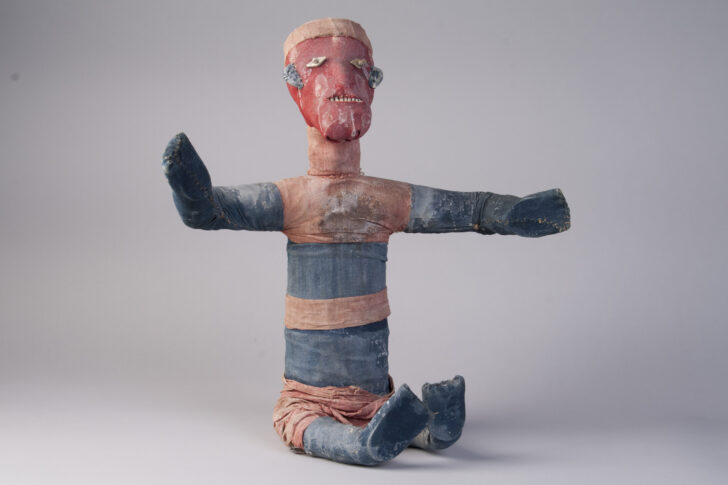Reliquary figure (muzidi)
Bembe

Description
(African Art and the Shape of Time; August 18, 2012-February 3, 2013)
13. Reliquary figure (muzidi)
Bembe peoples, 1885–1915, split cane, vegetable fiber, red and blue woven cotton cloth, wood pegs, human remains, University of Michigan Museum of Art, Anonymous gift, 1985/1.187
This muzidi reliquary figure formerly anchored the soul and housed the material remains of a deceased Bembe ancestor, providing a way for the dead to continue to dwell within and to play an active role in their communities. Though depicting a specific individual, the artist has given less emphasis to his transitory appearance in life and more emphasis to his permanent, spiritual appearance. Because death is considered only a stage in an endless cycling of states, the ancestor is presented as eternally active; poised and alert, he gestures skyward and to the horizon in reference to the cycling of time in relation to the movement of the sun.
Subject Matter:
Muzidi are depictions of ancestral spirits. Once properly activated, they protect their descendants from general misfortune and illness. Like minkisi, they accomplish this by connecting beings from different points of existence. Although they are inhabited by specific ancestors, their form does not represent them physically. Muzidi are deactivated when the ancestor spirit leaves it, reverted back to a inanimate object.
Physical Description:
Cloth figure of a human, bound around human remains. The figure is in a seated position with arms outstretched. The torso and neck are cylindrical and elongated.
Usage Rights:
If you are interested in using an image for a publication, please visit https://umma.umich.edu/request-image/ for more information and to fill out the online Image Rights and Reproductions Request Form.